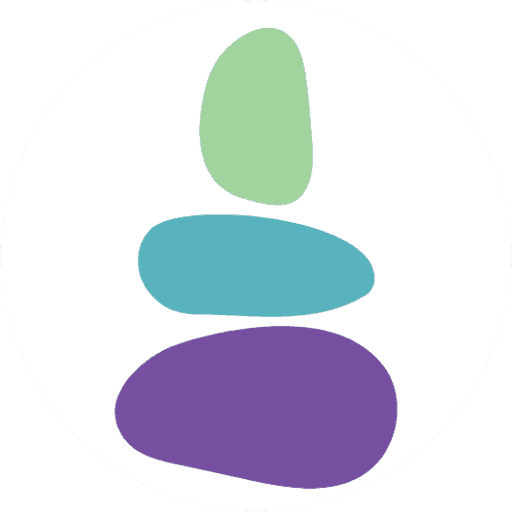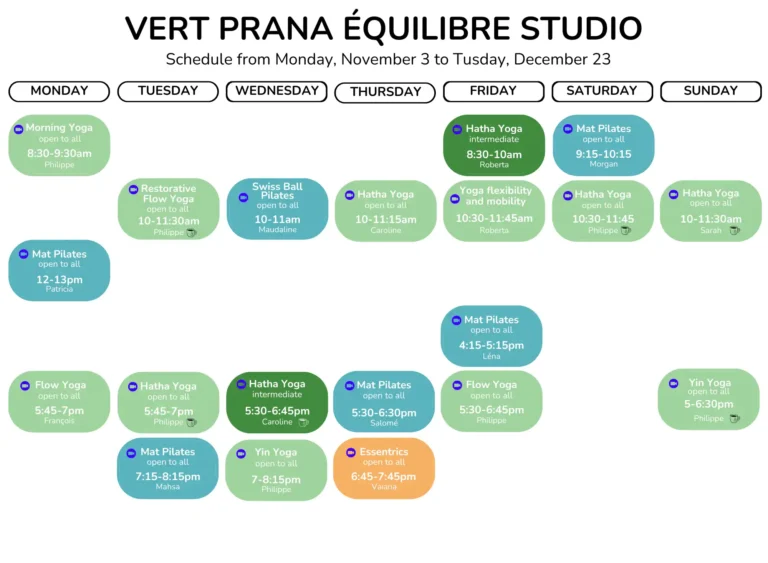Equilibre Vert Prana Studio
Yoga, Pilates & Essentrics
Classes at Vert Prana Equilibre Studio
Essentrics
Inspired by Tai-Chi, dance and Pilates, classes focus on stretching exercises.
Vert Prana Studio
4365 Saint-Denis street, H2J 2L2 Montréal
A bright and soothing Studio
Studio Équilibre Vert-Prana embodies tranquility and serenity to guide you in your yoga practice. Immerse yourself in a soothing environment that promotes relaxation and inner connection.
Our studio offers the perfect place where you can explore the benefits of yoga while being enveloped in an atmosphere conducive to relaxation and revitalization.
Book your first class
We use the Bsport software for payment and class reservations in all our studios.
Registration on Bsport
It is necessary to create an account on Bsport in order to purchase a package and come practice in the studio.
Purchase your package
Several packages are available to you. Based on your needs and goals, choose the one that suits you best.
Reserve your spot
After paying for your classes, you must reserve your spot in the classes you want to attend. Be careful! Don't confuse the rooms.
Book your class today!
Using the tabs, you can sort the classes displayed below according to your preferences: studio location, level, instructor, etc.

